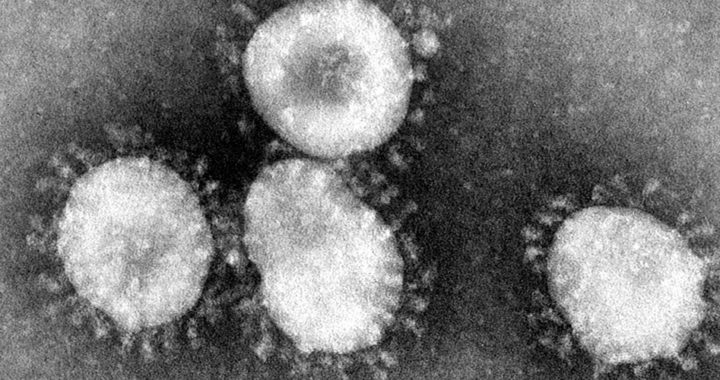Coronaviruses are a large family of viruses that cause diseases in mammalian, avian, and reptilian species. Note that some species such as bats serve as mere reservoirs of these viruses without causing symptoms associated with an infection.
In humans, some of these viruses can cause respiratory tract infections with varying severity ranging from mild illnesses such as the common cold and more severe diseases such as Severe Acute Respiratory Syndrome and Middle East Respiratory Syndrome.
What are Coronaviruses? What are their Characteristics?
• Coronaviruses are part of the order Nidovirales of the family Coronaviridae. They are also divided into four genera: alphacoronavirus or alpha-CoV, betacoronavirus or beta-CoV, gammacoronavirus or gamma-CoV, and delatacoronavirus or delta-CoV.
• They are enveloped viruses with a positive-sense single-stranded RNA genome and a nucleocapsid of helical symmetry. In other words, they are a specific type of RNA virus, and thus, they differ from a DNA virus in terms of their genetic structure and mode of replication.
• The genome size of these viruses ranges from 27 kilobases to 34 kilobases, thereby making them the largest among known RNA viruses. And because they are positive-sense single-stranded RNA viruses, they have a genetic material that can function both as a genome and as messenger RNA.
• Naming comes from the Latin word “corona,” which means “crown” or “halo” in English. When viewed under a microscope, these viruses have the characteristic appearance reminiscent of a crown made of protein spikes surrounding the virions.
• More specifically, these viruses have large pleomorphic spherical particles with bulbous surface projections that form a corona around particles. In addition, major proteins that constitute the structure of these viruses are the spike, envelope, membrane, and nucleocapsid.
Where do these Viruses Come From? What Diseases do They Cause?
• There are hundreds of coronaviruses, and most of them circulate chiefly among animals. However, some of them have evolved and jumped to humans through a spillover event, such as in the case of SARS-CoV, MERS-CoV, SARS-CoV-2, and four other coronaviruses that cause mild respiratory symptoms in the human population.
• Hence, these viruses are zoonotic, meaning they are transmitted between animals and people. For example, there is a broad consensus that SARS-CoV was transmitted from bats to civet cats and further down to humans while MERS-CoV came from dromedary camels.
• Bats and birds, being warm-blooded flying vertebrates, seemed to be ideal hosts for coronavirus gene source, thus fueling coronavirus evolution and dissemination.
• Symptoms of infections vary from species to species. For example, in chickens, they cause an upper respiratory disease, while in cows and pigs, they cause diarrhea. Some infections are asymptomatic, such as in the case of most bat species.
• Known coronaviruses to infect humans are HCoV-229E, HCoV-OC43, HCoV-NL63, and HCoV-HKU1, as well as the SARS-CoV, MERS-CoV, and SARS-CoV-2. A novel coronavirus or nCoV is the usual naming designation for a new strain that has not been previously identified in humans.
FURTHER READINGS AND REFERENCES
- Hoffman, E. 2020. “Known Human Coronaviruses: From HCoV-OC43 to SARS-CoV-2.” Profolus. Available online
- Hoffman, E. 2020. “Spillover: How Viruses Jump from Animals to Humans.” Profolus. Available online
- Li, F., Li, W., Farzan, M., and Harrison, S. C. 2005. “Structure of SARS Coronavirus Spike Receptor-Binding Domain Complexed with Receptor.” Science. 309(5642): 1865-1868. DOI: 1126/science.1116480
- National Institute of Allergy and Infectious Diseases. n.d. “Coronaviruses.” National Institute of Allergy and Infectious Diseases. Available online
- Wertheim, J. O., Chu, D. K. W., Peiris, J. S. M., Kosakovsky Pond, S. L., and Poon, L. L. M. 2013. A Case for the Ancient Origin of Coronaviruses. Journal of Virology. 87(12), 7039–7045. DOI: 1128/JVI.03273-12





